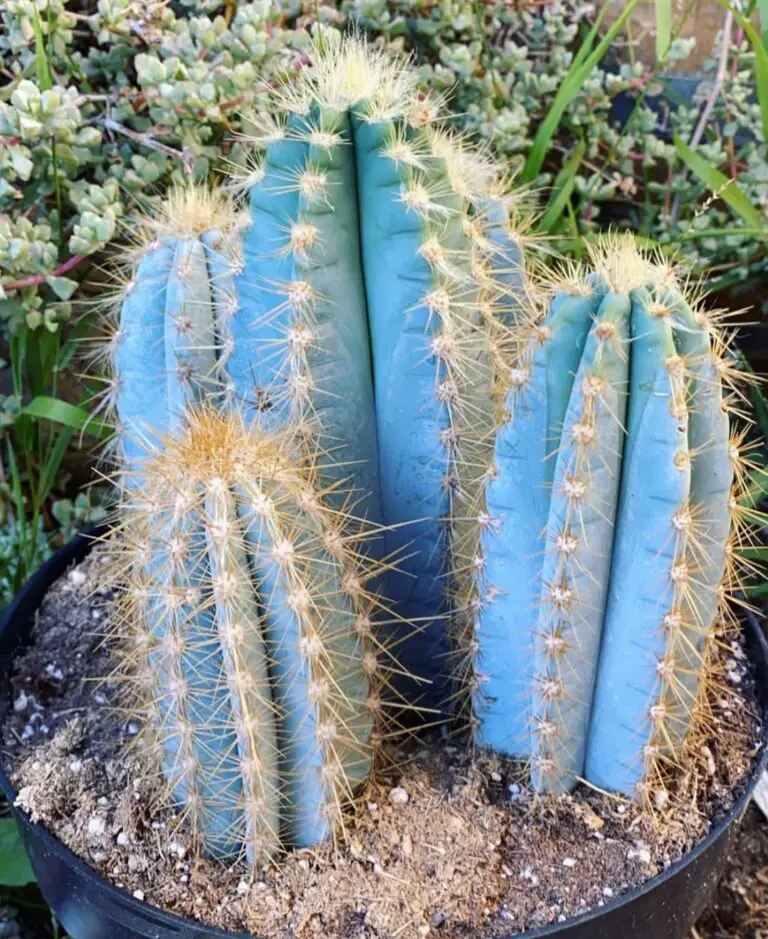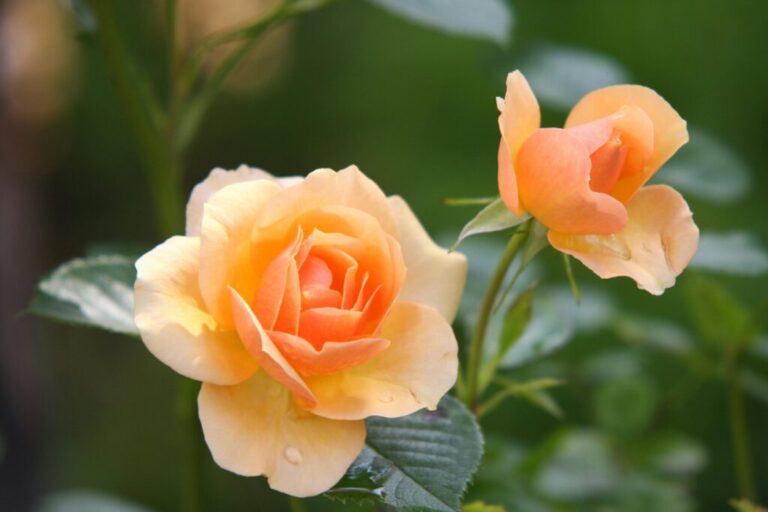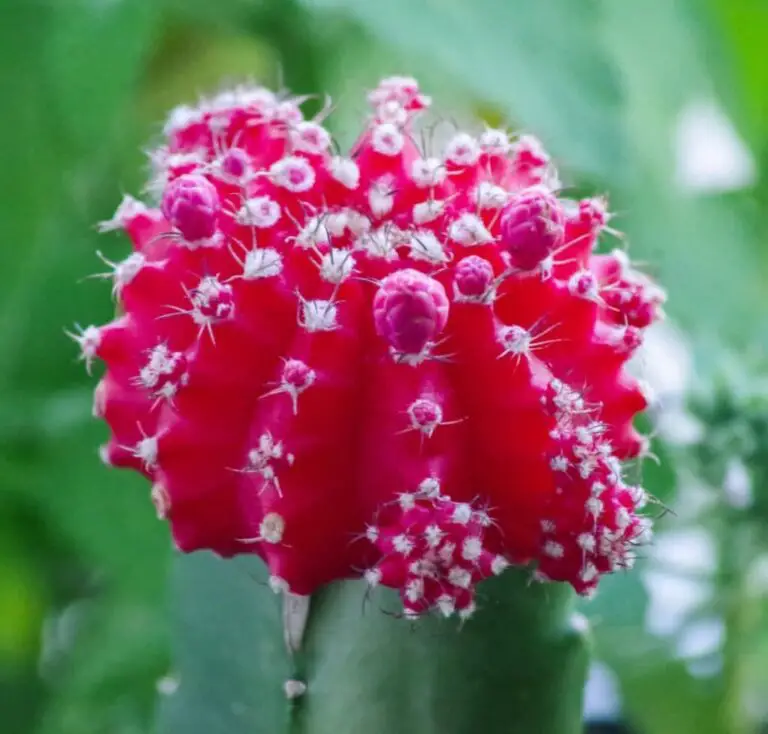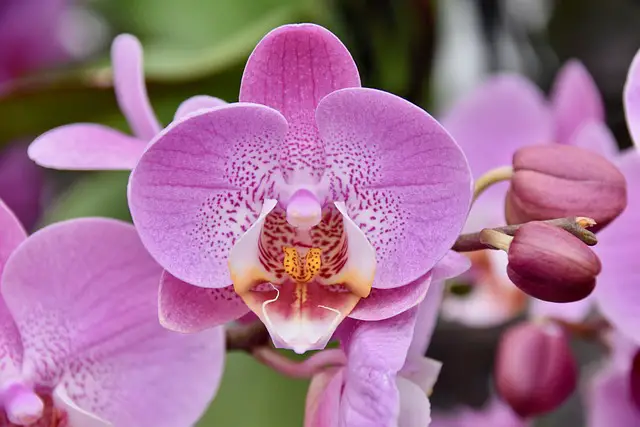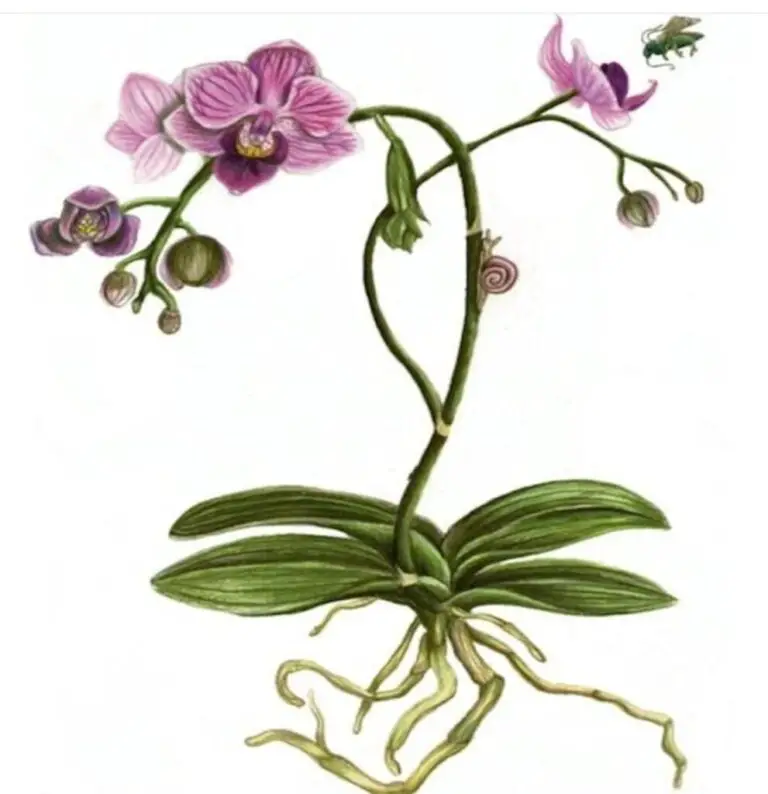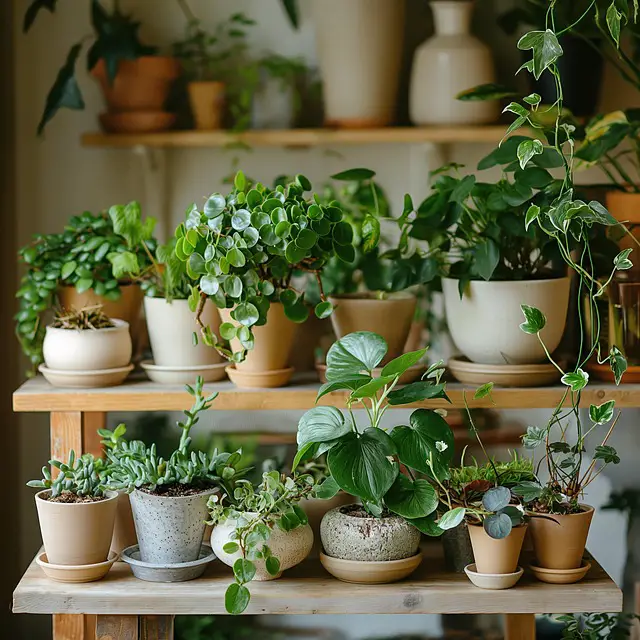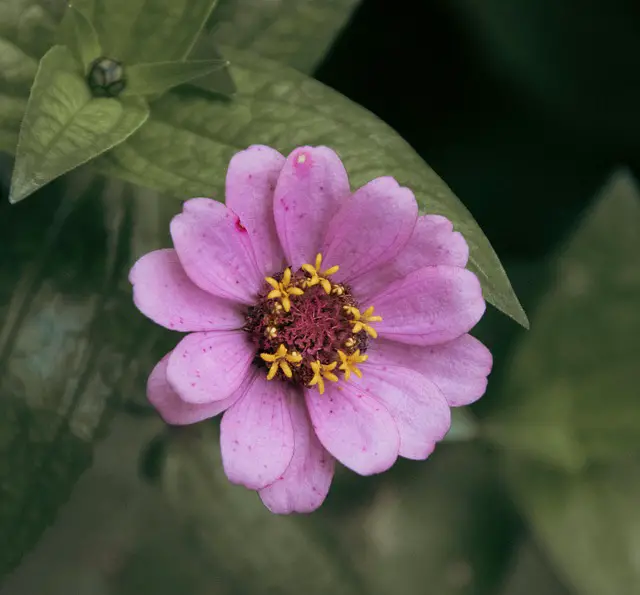- 1 Expensive Cactus Species
- 2 The Golden Barrel Cactus (Echinocactus grusonii):
- 3 Peyote (Lophophora williamsii)
- 4 Astrophytum asterias, ‘Super Kabuto’:
- 5 Uebelmannia pectinifera
- 6 Ariocarpus fissuratus, ‘Living Rock Cactus’:
- 7 Echinocereus grusonii, ‘Rainbow Hedgehog Cactus
- 8 Astrophytum myriostigma ‘Bishop’s Cap Cactus
- 9 Copiapoa cactus:(Copiapoa spp.)
- 10 Turbinicarpus cacti:
- 11 Ferocactus latispinus, ‘Devil’s Tongue Barrel Cactus’:
- 12 Brain Cactus (Stenocactus multicostatus)
- 13 Aztekium ritteri
- 14 Acanthocalycium cacti:
- 15 Blue Barrel Cactus (Ferocactus glaucescens)
- 16 Large Nipple Cactus (Mammillaria magnimamma)
- 17 Gymnocalycium mihanovichii, ‘Moon Cactus
- 18 Parodia Cactus (Parodia spp.)
- 19 Horse Crippler Cactus (Echinocactus texensis)
- 20 Turbinicarpus saueri, ‘Sauer’s Cactus’:
- 21 Coryphantha Cactus (Coryphantha spp.)
- 22 Melocactus (Melocactus spp.)
- 23 FAQS
Expensive Cactus in the world of botanical wonders, cacti stand out as resilient symbols of endurance and adaptability. These spiny succulents have long captivated enthusiasts and collectors alike, but few realise the astonishing value some cacti command in the market. From rare specimens coveted by collectors to unique hybrids prized for their beauty, the cactus world boasts a hidden realm of opulence.
Join us on a journey through the realm of nature’s luxury as we explore the 21 most expensive cacti in the world. From the remote deserts of South America to the private collections of avid collectors, these remarkable plants are more than just ornamental curiosities; they represent a convergence of rarity, beauty, and investment potential.
Whether you’re a seasoned collector or simply intrigued by the intersection of nature and wealth, prepare to be amazed by the astonishing value these prickly treasures can command.
Expensive Cactus Species
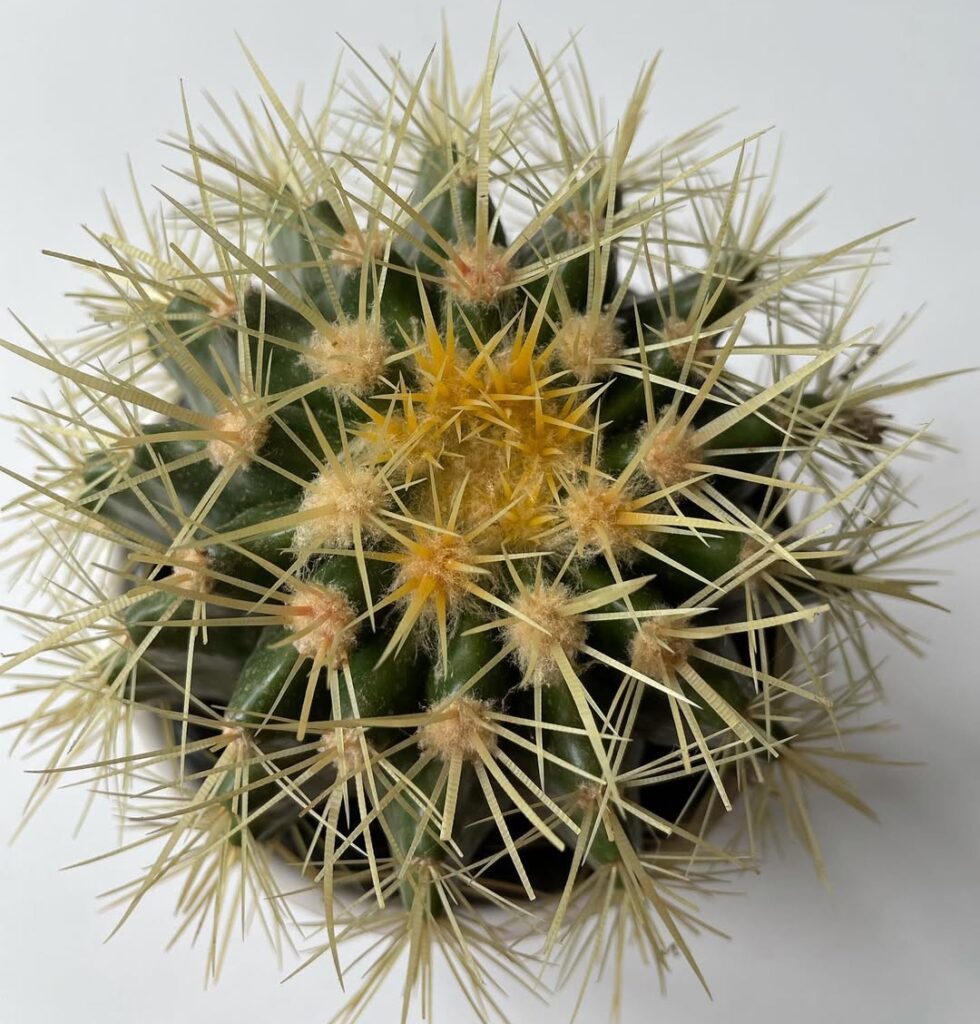
The Golden Barrel Cactus (Echinocactus grusonii):
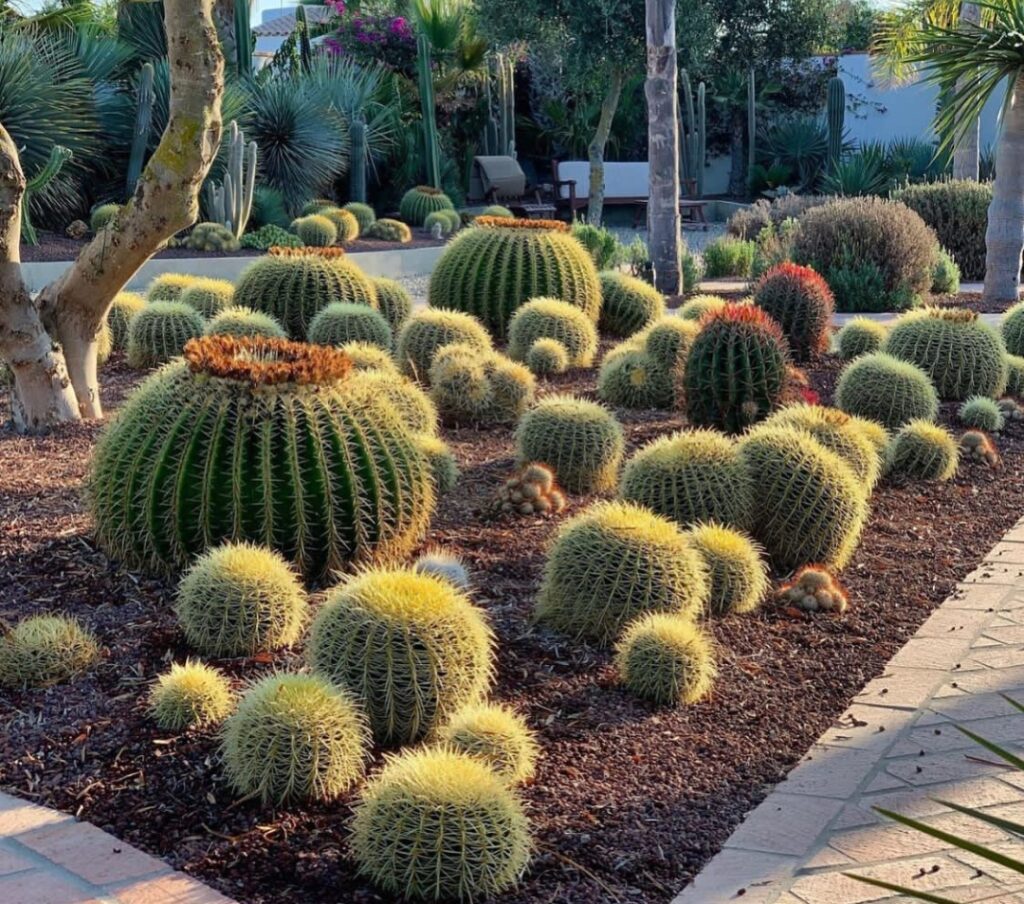
💰 Price Range: $100 – $3,000
The Golden Barrel Cactus is one of the most recognizable and sought-after cacti. Native to Mexico, it forms a nearly perfect sphere covered in golden-yellow spines, making it a collector’s favorite.
Known for its striking golden hue and spherical shape, the Golden Barrel Cactus tops the list as one of the most expensive cacti in the world. Its rarity in cultivation and slow growth contribute to its high value, with specimens fetching thousands of dollars in auctions and collector circles.
Why Is It Expensive?
This cactus is expensive due to its extremely slow growth rate—taking decades to reach full size—and its declining numbers in the wild due to habitat destruction. Mature specimens can sell for thousands of dollars.
🌵 Care Tip: Thrives in full sun, requires minimal watering, and needs well-draining soil to prevent rot.
Peyote (Lophophora williamsii)
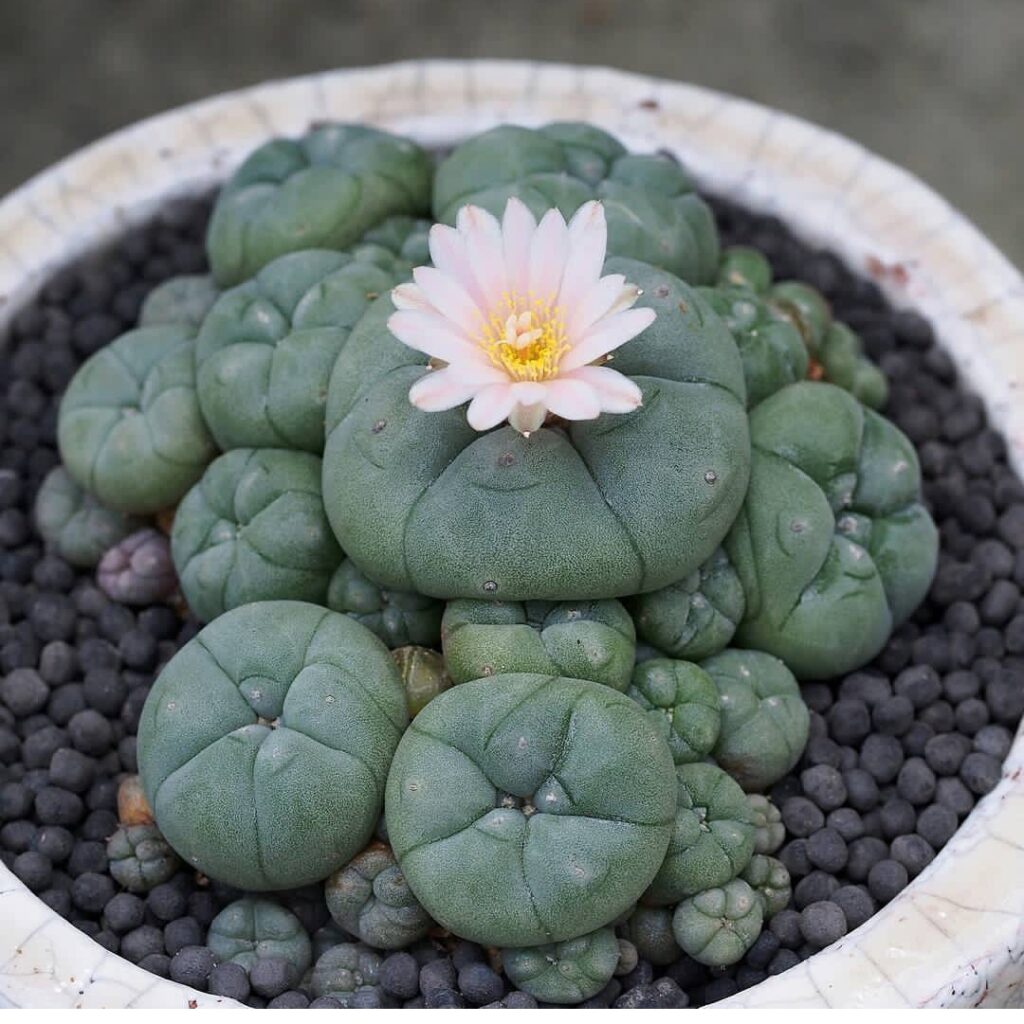
💰 Price Range: $200 – $2,500
The Peyote cactus is a small, spineless cactus native to North America, known for its cultural and medicinal significance among indigenous groups.
Revered for its cultural significance and psychoactive properties, the Peyote cactus commands a hefty price tag in certain markets. Due to legal restrictions and conservation efforts, cultivated specimens of this sacred plant can be exceptionally expensive, making them a prized possession among collectors and enthusiasts.
Why Is It Expensive?
Peyote is protected under conservation laws due to overharvesting and habitat loss, making it hard to obtain legally. It also grows extremely slowly, taking years to reach maturity.
🌵 Care Tip: Prefers partial sun, well-draining soil, and minimal watering.
Astrophytum asterias, ‘Super Kabuto’:
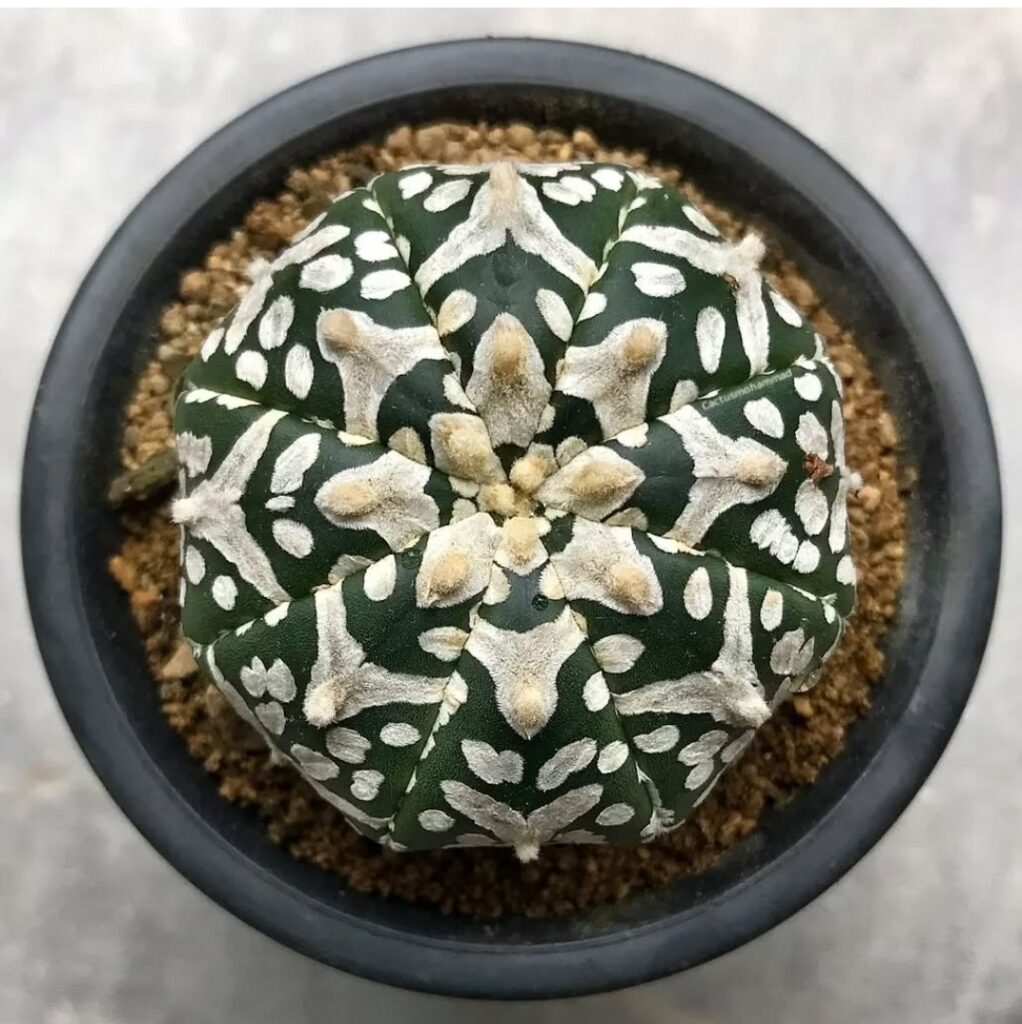
💰 Price Range: $150 – $3,000
This rare Japanese cultivar is a unique variety of Astrophytum asterias, featuring intricate white speckles across its surface, making it one of the most visually striking cacti.
With its distinctive star-shaped markings and unique rib structure, the Super Kabuto cactus is highly sought after by collectors. Its rarity in the wild and slow growth rate contribute to its exclusivity and high market value, making it a coveted addition to any cactus collection.
Why Is It Expensive?
Its stunning pattern and rarity make it highly sought-after. It is also difficult to cultivate, as growing from seeds can take years, and each plant has a unique pattern, increasing its value.
🌵 Care Tip: Needs bright indirect light, low humidity, and infrequent watering to avoid rot.
Uebelmannia pectinifera
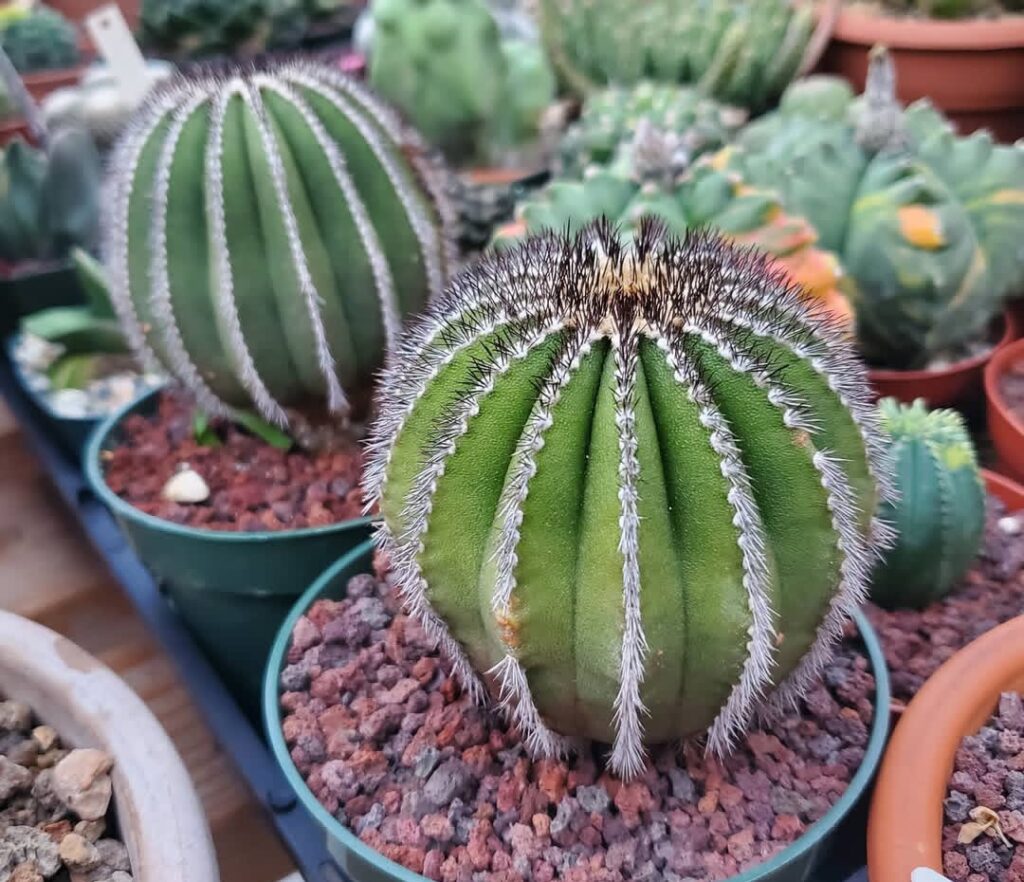
💰 Price Range: $300 – $2,500+
Uebelmannia pectinifera is a rare and highly prized cactus native to Brazil. Known for its striking deep purple to metallic gray coloration and distinctive ribbed texture, this unique species stands out in any collection. It thrives in warm, arid conditions but requires precise care, including well-draining soil and controlled watering. Due to its slow growth and difficulty in cultivation, mature specimens are highly sought after, making Uebelmannia pectinifera one of the most valuable and expensive cacti among collectors and enthusiasts.
Why Is It Expensive?
This stunning, deep purple cactus is rare and slow-growing. It is difficult to propagate, making mature plants incredibly valuable. Found only in Brazil, it has a unique ribbed texture and metallic sheen.
🌵 Care Tip: Needs very porous, well-draining soil and high temperatures to thrive.
Ariocarpus fissuratus, ‘Living Rock Cactus’:
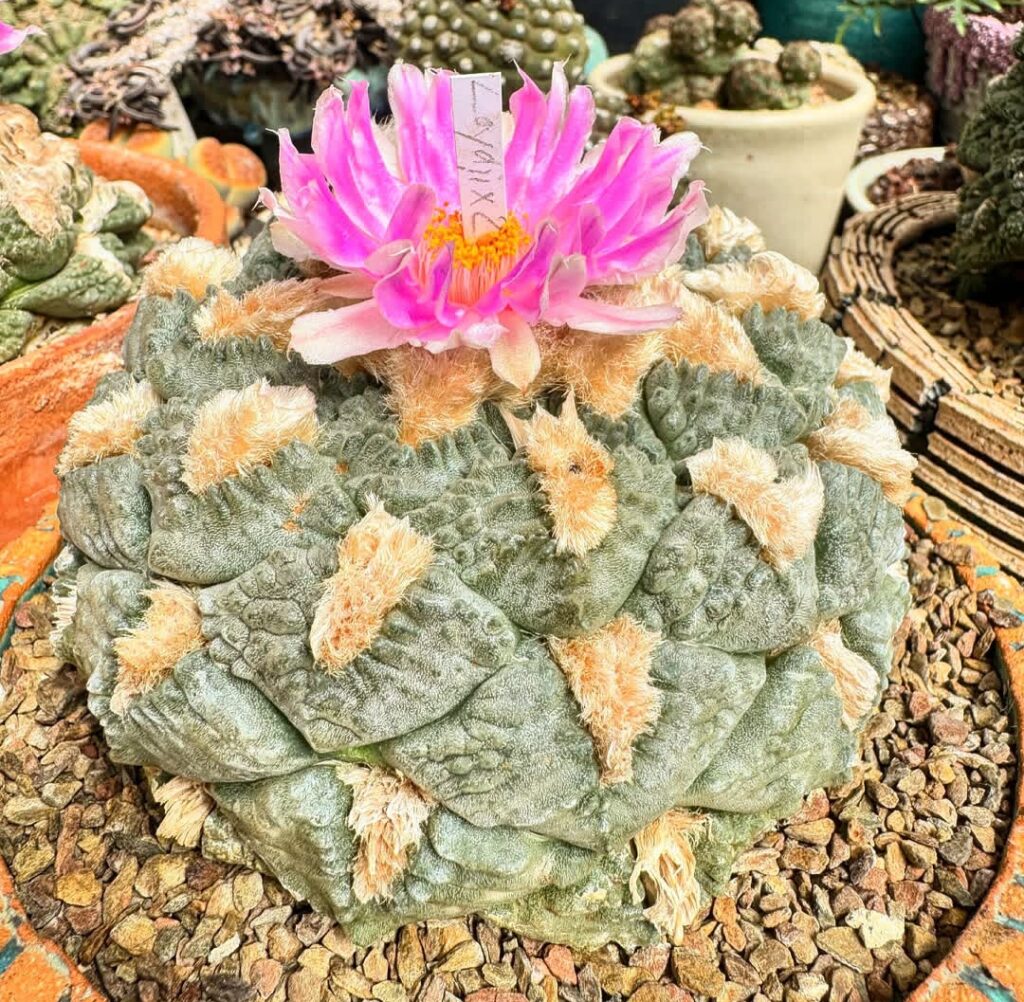
💰 Price Range: $300 – $3,500
The Living Rock Cactus looks like a stone, allowing it to blend into rocky landscapes. Found in Mexico and Texas, it is one of the slowest-growing cacti in the world.
Aptly named for its rock-like appearance, the Living Rock Cactus is prized for its unusual morphology and slow growth. Collectors are willing to pay top dollar for well-established specimens of this rare and sought-after cactus, making it a valuable asset in the world of cactus cultivation.
Why Is It Expensive?
This species takes years—sometimes decades—to mature, making mature plants rare. Its camouflage ability also makes it hard to find in the wild, increasing its price among collectors.
🌵 Care Tip: Needs full sun, well-draining soil, and very little water to prevent rot.
Echinocereus grusonii, ‘Rainbow Hedgehog Cactus
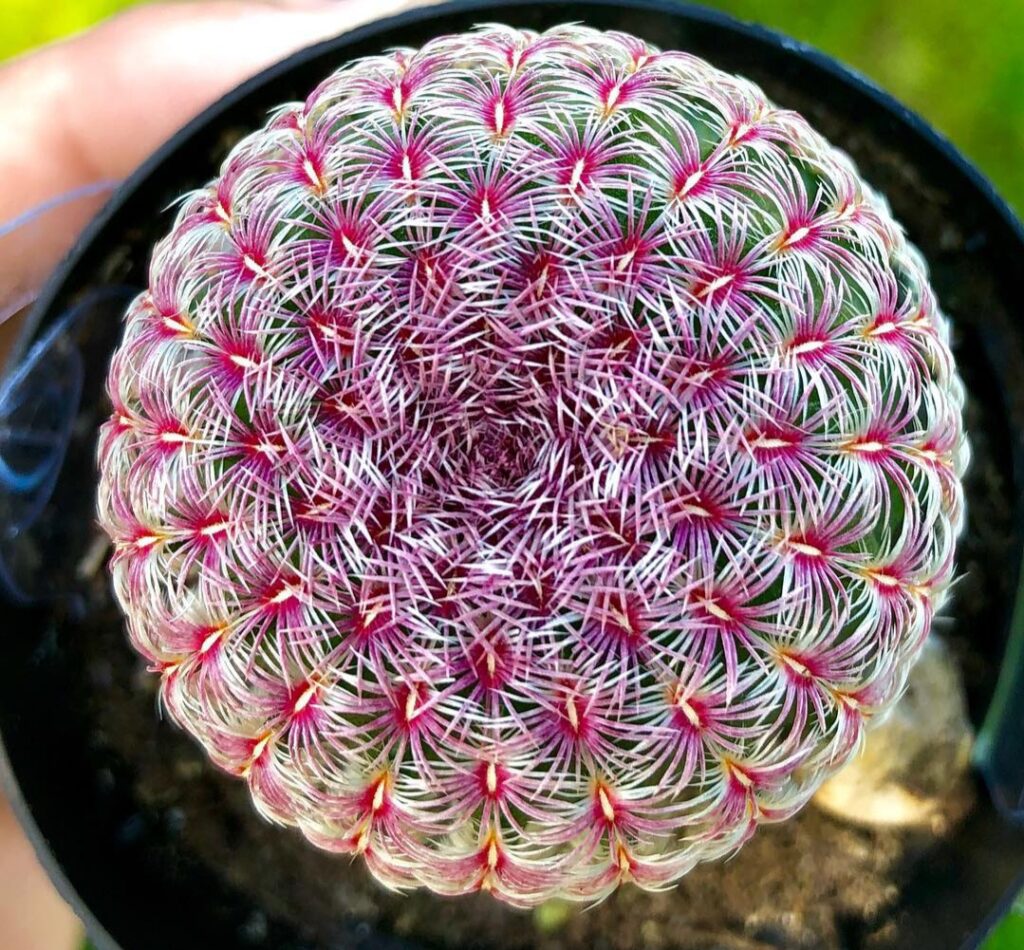
💰 Price Range: $120 – $1,500
This vibrant cactus features a mix of pink, red, and yellow spines, giving it a rainbow-like appearance
Sporting vibrant hues ranging from pink to purple, the Rainbow Hedgehog Cactus is a stunning and sought-after addition to any cactus collection. Its striking colours and slow growth contribute to its high market value, with enthusiasts willing to pay premium prices for well-established specimens.
Why Is It Expensive?
Its colorful spines and rare blooming cycle make it highly desirable. It also grows slowly and requires grafting for successful cultivation.
🌵 Care Tip: Requires bright light, occasional watering, and well-draining soil.
Astrophytum myriostigma ‘Bishop’s Cap Cactus
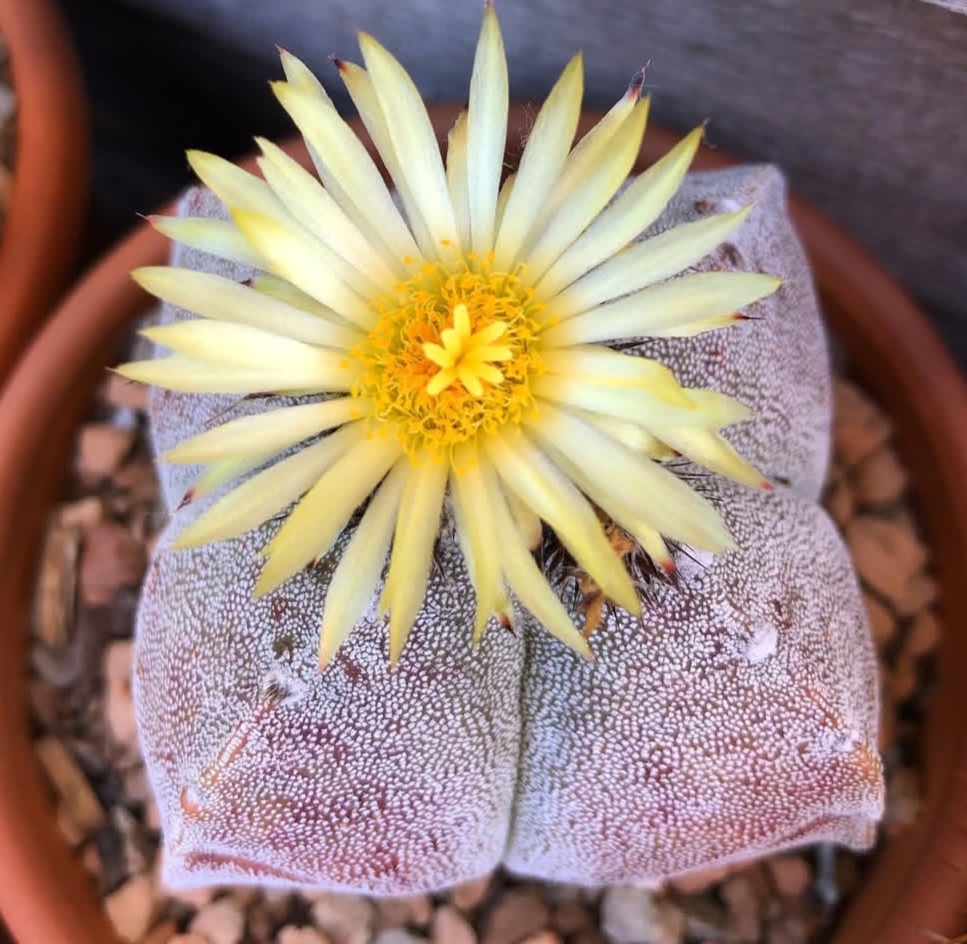
💰 Price Range: $80 – $2,000
The Bishop’s Cap is a spineless cactus with a unique star-shaped body, native to Mexico.
Named for its distinctive cap-like shape, the Bishop’s Cap Cactus is prized for its ornamental value and unique appearance. With its slow growth and limited availability, this cactus commands a high price in collector circles, making it a coveted addition to any collection.
Why Is It Expensive?
Its unusual shape, rarity in cultivation, and slow growth contribute to its high price. Some cultivars with intricate patterns are even more valuable.
🌵 Care Tip: Needs bright indirect sunlight and well-draining soil.
Copiapoa cactus:(Copiapoa spp.)
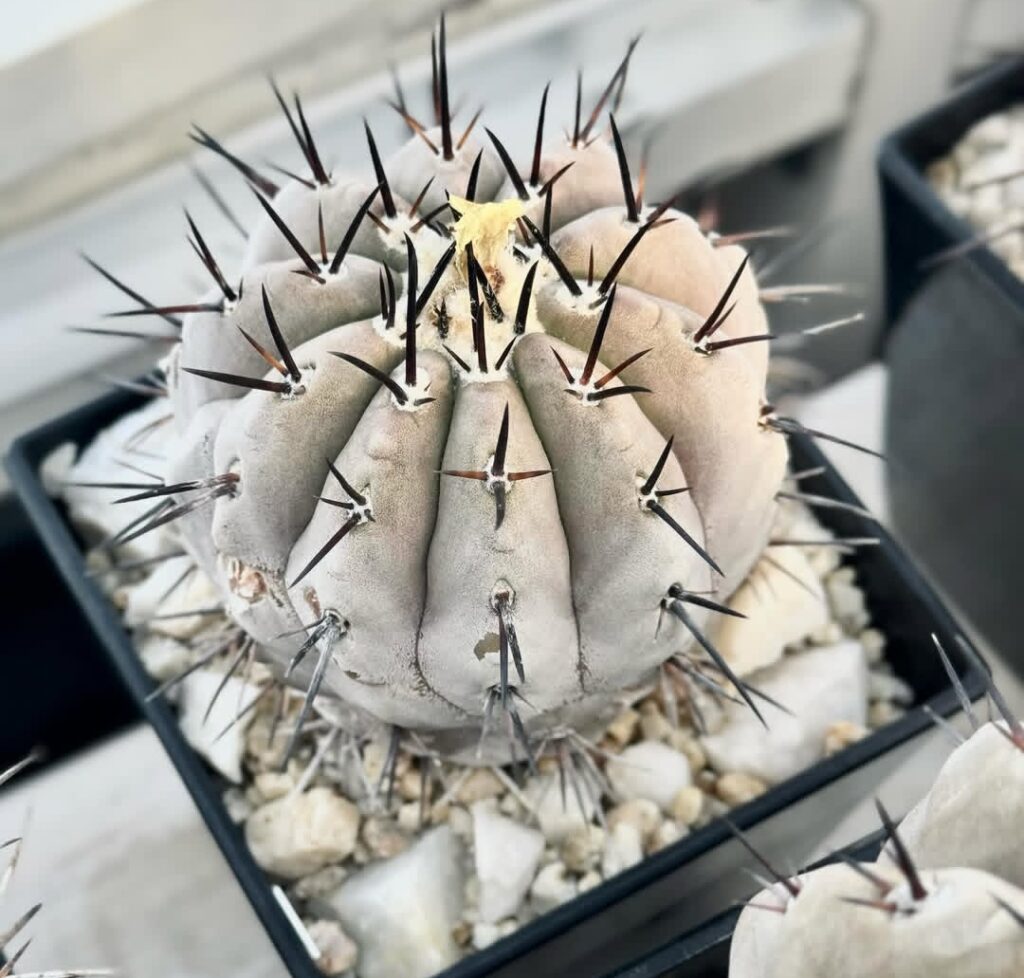
💰 Price Range: $200 – $5,000
Native to Chile, Copiapoa cacti are famous for their dark, almost black spines and spherical shapes.
hailing from the arid regions of Chile, Copiapoa cacti are prized for their striking appearance and resilience. Certain rare species and cultivars of Copiapoa can fetch exorbitant prices in the collector market, with enthusiasts eagerly vying for the opportunity to add these rare specimens to their collections.
Why Is It Expensive?
Many species are critically endangered, and legal specimens are hard to find. Wild collection bans have made nursery-grown plants extremely valuable.
🌵 Care Tip: Prefers dry conditions and occasional watering.
Turbinicarpus cacti:
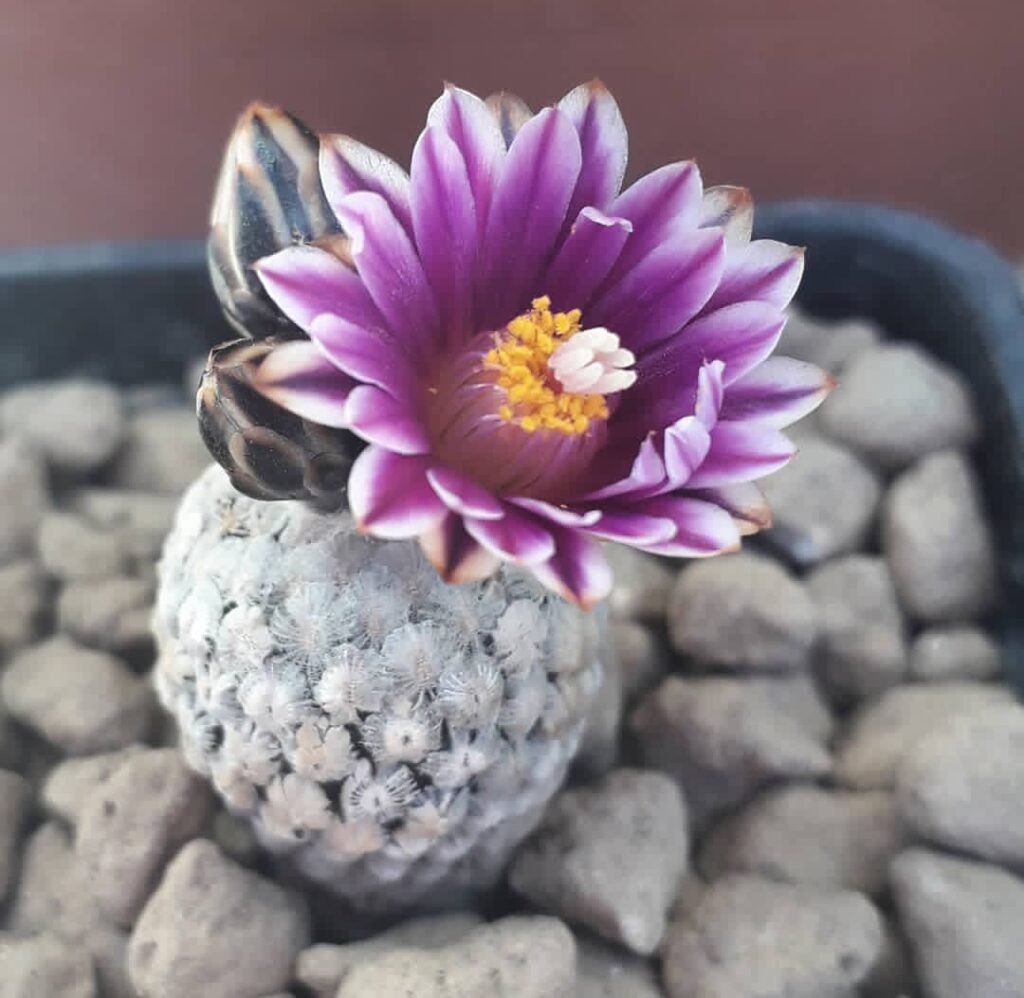
💰 Price Range: $100 – $2,000+
Turbinicarpus cacti are small, slow-growing species native to Mexico. They are highly prized for their compact size, unique geometric patterns, and stunning flowers, making them a favorite among cactus collectors.
With their compact size and intricate patterns, Turbinicarpus cacti are highly prized by collectors and enthusiasts alike. Certain species and cultivars of Turbinicarpus, such as Turbinicarpus valdezianus and Turbinicarpus pseudopectinatus, can command significant prices in the collector market due to their rarity and ornamental value.
Why Is It Expensive?
These cacti are slow-growing and endangered, with many species found in limited, rocky habitats. Their rarity in cultivation and increasing demand among collectors contribute to their high price.
🌵 Care Tip: Requires a gritty, well-draining soil mix, infrequent watering, and bright, indirect light to thrive.
Ferocactus latispinus, ‘Devil’s Tongue Barrel Cactus’:
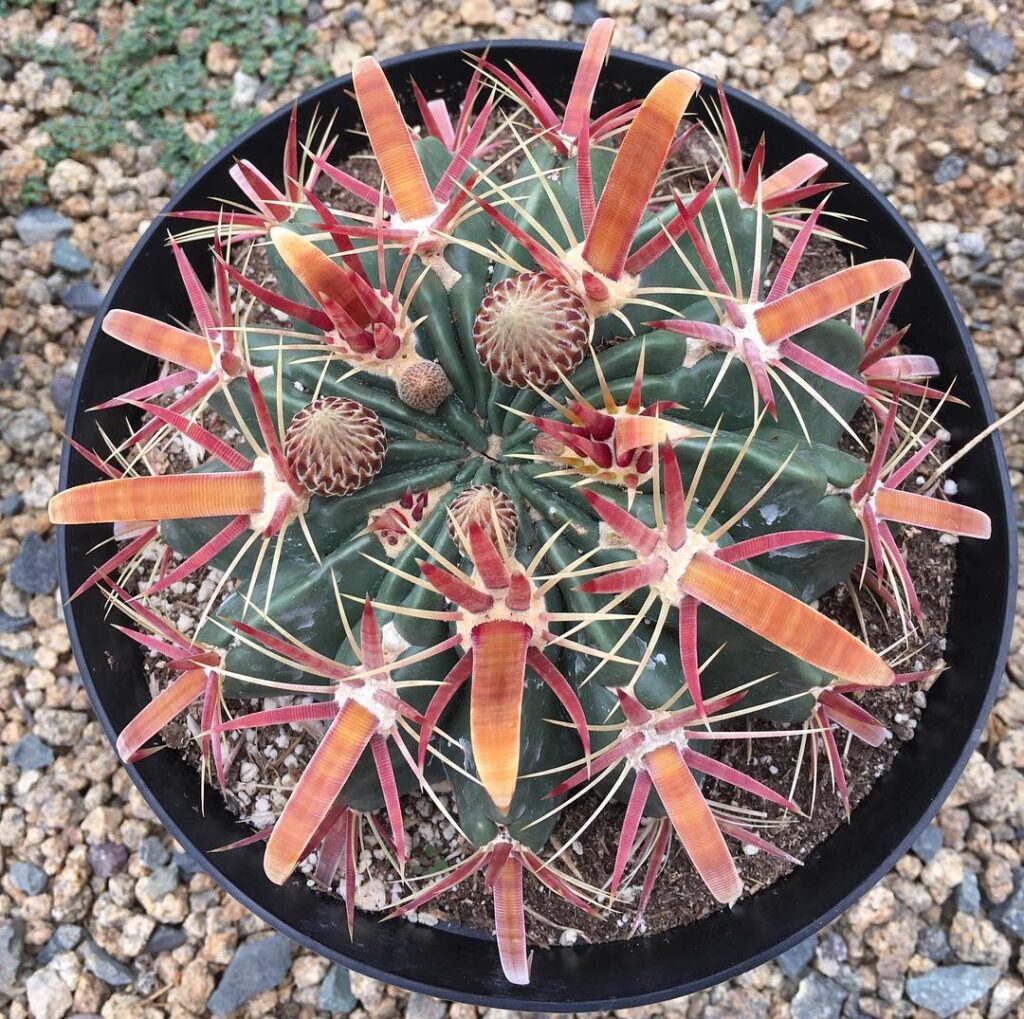
💰 Price Range: $90 – $1,200
This ferocious-looking barrel cactus is known for its long, hooked spines that resemble a devil’s tongue.
Featuring striking red spines and a barrel-shaped body, the Devil’s Tongue Barrel Cactus is a highly sought-after addition to any cactus collection. Its ornamental value and slow growth contribute to its high market value, with collectors willing to pay top dollar for well-established specimens.
Why Is It Expensive?
Its slow growth and striking appearance make it desirable. Collectors seek large, well-formed specimens, which are rare.
🌵 Care Tip: Needs full sun and well-draining soil.
Brain Cactus (Stenocactus multicostatus)

💰 Price Range: $150 – $2,000
The Brain Cactus is named for its unusual, heavily ribbed surface that resembles the folds of a brain. This quirky cactus is native to Mexico and is popular among collectors for its distinct look.
Renowned for its distinctive brain-like appearance, the Brain Cactus is a prized addition to any cactus collection. Its unusual morphology and slow growth rate make it a rare find in cultivation, with collectors eagerly seeking out well-established specimens for their collections.
Why Is It Expensive?
Its unique appearance, slow growth, and limited availability drive up its price. Mature specimens with well-defined ridges can be hard to find, making them more valuable.
🌵 Care Tip: Needs bright indirect light, moderate watering, and excell
Aztekium ritteri
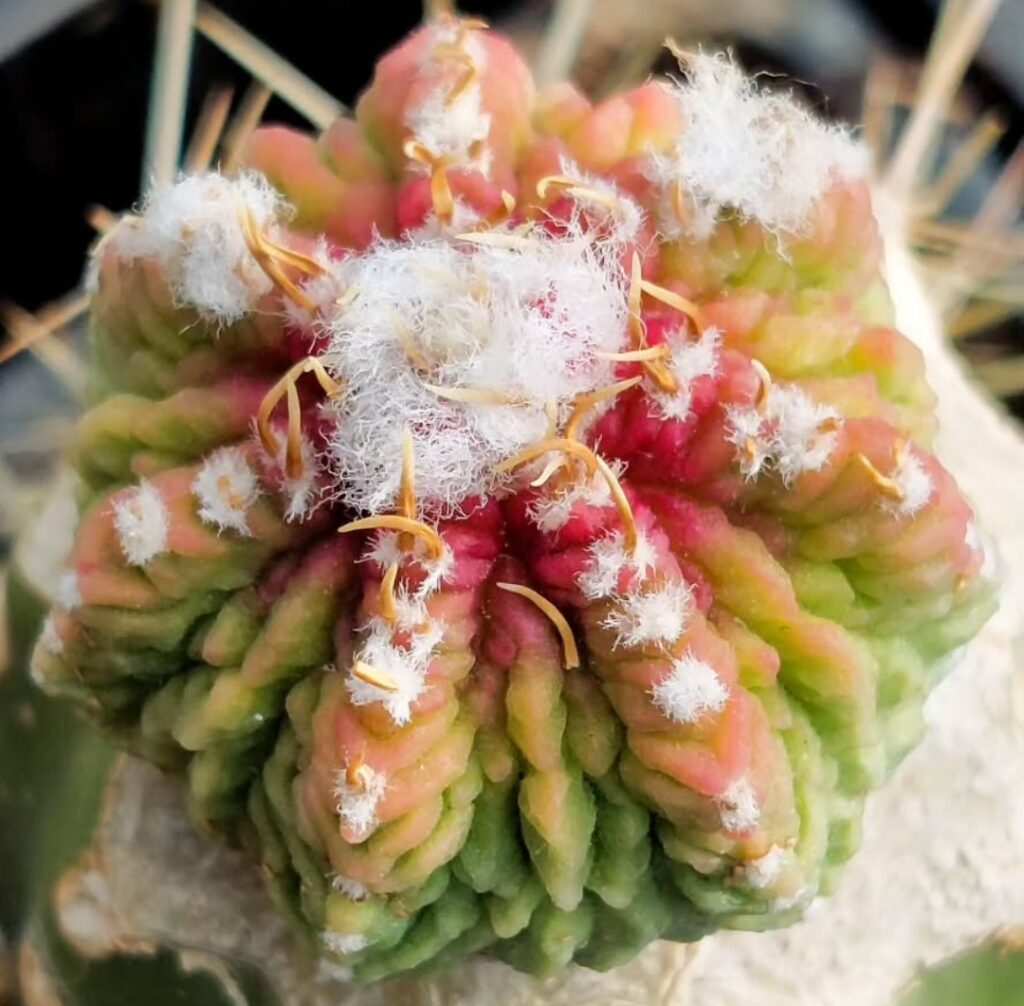
💰Price Range: $500 – $3,500+
Aztekium ritteri is one of the rarest and most expensive cacti in the world, native to the rocky limestone cliffs of northeastern Mexico. This small, slow-growing cactus features unique, ribbed, and wrinkled textures that resemble ancient carvings, making it highly desirable among collectors. Due to its extremely slow growth rate—often taking decades to reach a few inches in size—and its challenging propagation requirements, it remains scarce in cultivation. These factors contribute to its high market value, making Aztekium ritteri a prized addition to any rare cactus collection.
Why Is It Expensive?
This ultra-rare, slow-growing cactus is native to Mexico and takes decades to mature. It is difficult to propagate and requires precise growing conditions, making it highly valuable among collectors.
🌵 Care Tip: Needs limestone-rich soil, minimal watering, and high temperatures to thrive.
Acanthocalycium cacti:
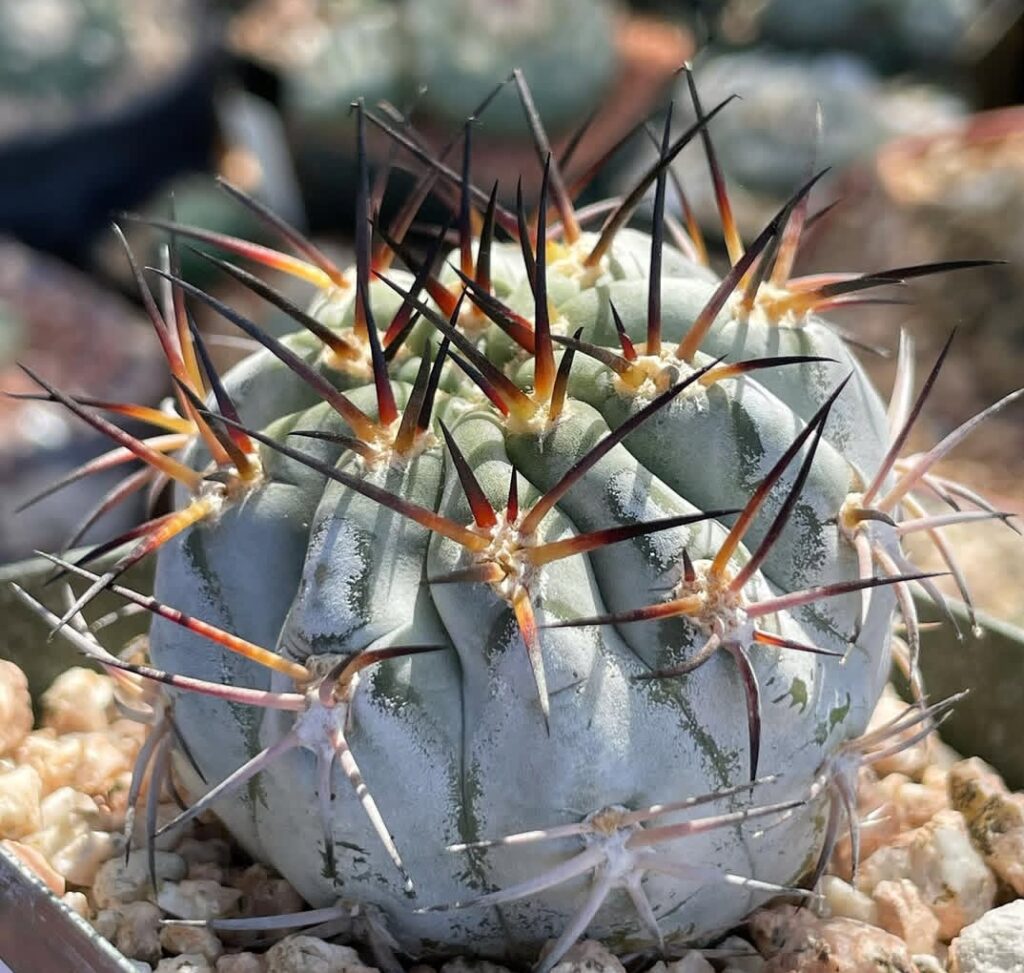
💰 Price Range: $50 – $250+
Acanthocalycium cacti are known for their vibrant, large flowers and spiny, round bodies. Native to Argentina, they are hardy and adaptable, making them an excellent choice for collectors.
With their intricate spination and striking flowers, Acanthocalycium cacti are highly valued by collectors for their ornamental beauty. Certain rare species and cultivars of Acanthocalycium, such as Acanthocalycium glaucum and Acanthocalycium thionanthum, can command premium prices in the collector market due to their rarity and aesthetic appeal.
Why Is It Expensive?
Some rare species and variegated forms are difficult to find, and their beautiful blooms and slow growth increase their value. While not the most expensive, certain cultivars can fetch high prices.
🌵 Care Tip: Provide full sun, well-draining soil, and deep but infrequent watering to promote flowering and healthy growth.
Blue Barrel Cactus (Ferocactus glaucescens)
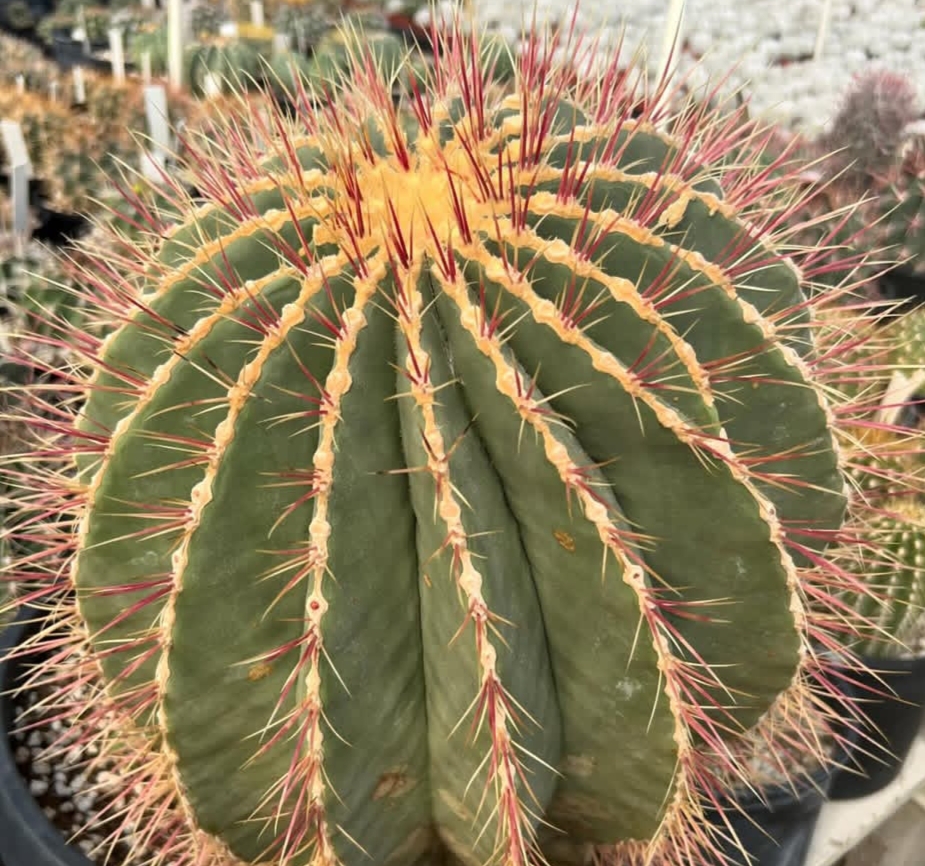
💰 Price Range: $100 – $1,800
This cactus stands out due to its bluish-green body and yellow flowers, creating a striking contrast. It thrives in arid regions and is highly sought after by collectors.
Featuring striking blue-grey spines and a barrel-shaped body, the Blue Barrel Cactus is a prized addition to any cactus collection. Its unique coloration and slow growth rate contribute to its high market value, with collectors eagerly seeking out well-established specimens for their collections.
Why Is It Expensive?
The unique blue coloration and slow growth rate make it rare and costly. Large specimens take years to develop, and their scarcity in cultivation increases their value.
🌵 Care Tip: Requires full sun, occasional deep watering, and well-draining soil.
Large Nipple Cactus (Mammillaria magnimamma)
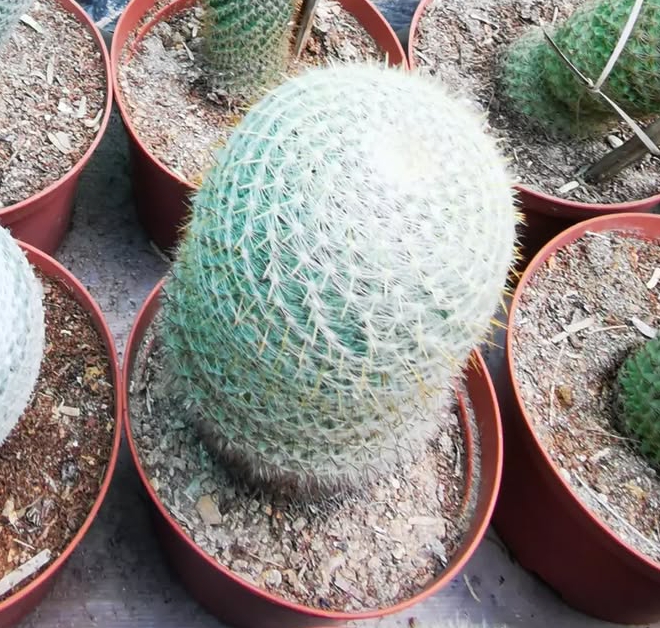
💰 Price Range: $120 – $2,500
A member of the Mammillaria genus, this cactus features clustered tubercles (nipple-like projections) and beautiful pink flowers when in bloom
Named for its prominent tubercles and large flowers, the Large Nipple Cactus is a sought-after addition to any cactus collection. Its ornamental value and slow growth make it a rare find in cultivation, with collectors willing to pay top dollar for well-established specimens.
Why Is It Expensive?
Its slow-growing nature and clustering pattern make mature specimens rare. Well-formed clusters are difficult to find, leading to high demand among collectors.
🌵 Care Tip: Prefers partial sunlight and occasional watering.
Gymnocalycium mihanovichii, ‘Moon Cactus
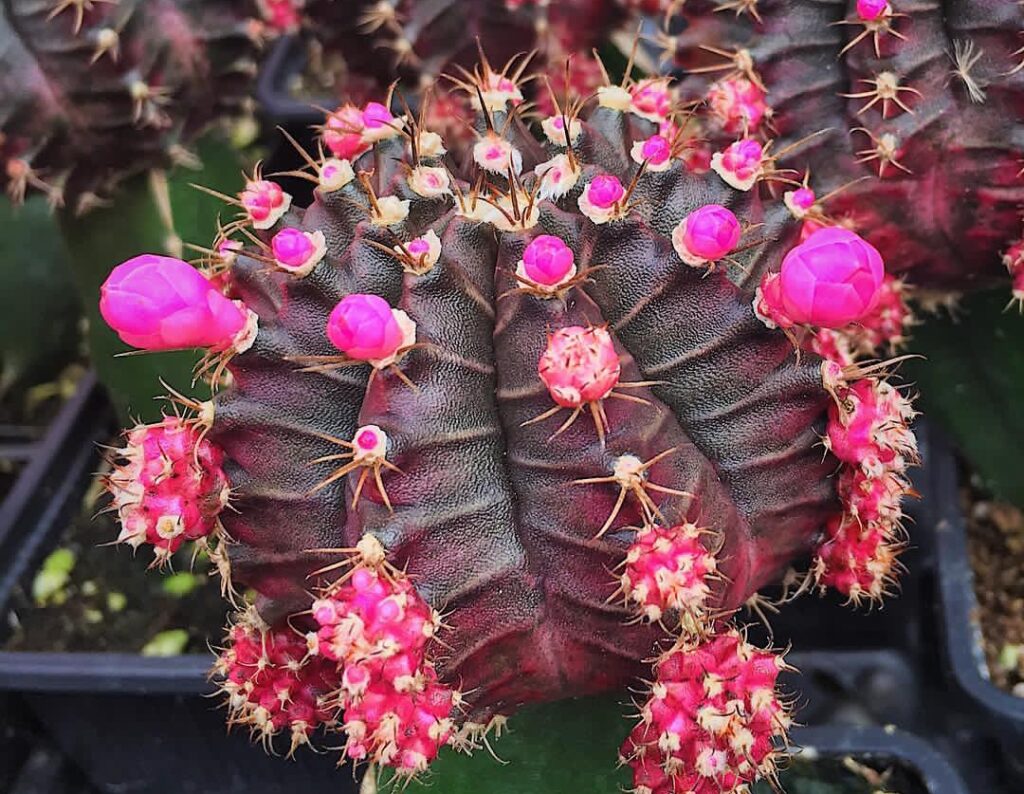
💰 Price Range: $50 – $1,500
The Moon Cactus is a vibrant, grafted cactus that lacks chlorophyll, giving it bright red, pink, or yellow hues.
Characterised by its bright, colourful appearance and lack of chlorophyll, the Moon Cactus is a popular choice among collectors for its ornamental value. Certain rare cultivars of Gymnocalycium mihanovichii, such as the red, orange, and yellow varieties, can command premium prices in the collector market due to their striking colours and unique appearance.
Why Is It Expensive?
Since it cannot survive on its own, it must be grafted onto another cactus, making cultivation more complex. Unique color variations fetch higher prices.
🌵 Care Tip: Needs indirect sunlight and occasional watering.
Parodia Cactus (Parodia spp.)
💰 Price Range: $80 – $1,500
Parodia cacti are known for their compact, round shape and vibrant flowers that bloom in red, orange, and yellow shades
With their spherical bodies and colourful spination, Parodia cacti are prized by collectors for their ornamental beauty. Certain rare species and cultivars of Parodia, such as Parodia leninghausii and Parodia warasii, can fetch significant prices in the collector market due to their rarity and aesthetic appeal.
Why Is It Expensive?
Some Parodia species are hard to cultivate due to their sensitivity to overwatering and temperature fluctuations. Their brightly colored blooms also increase their market value.
🌵 Care Tip: Needs bright indirect light, good airflow, and careful watering.
Horse Crippler Cactus (Echinocactus texensis)
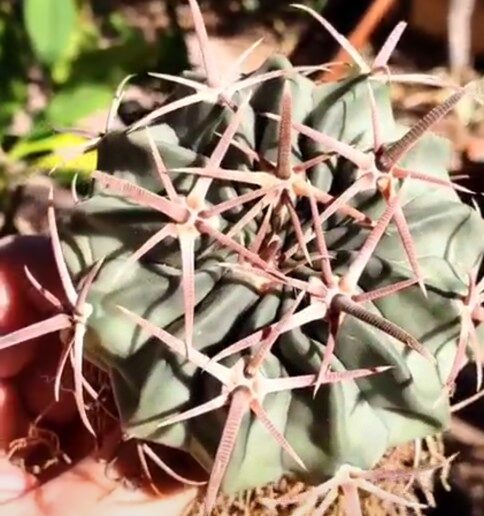
💰 Price Range: $100 – $2,200
This low-growing, heavily spined cactus is found in Texas and Mexico. It gets its name because its hard, sharp spines can injure animals that step on it.
Featuring formidable spines and a distinctive ribbed texture, the Horse Crippler Cactus is a prized addition to any cactus collection. Its ornamental value and slow growth rate contribute to its high market value, with collectors eagerly seeking out well-established specimens for their collections.
Why Is It Expensive?
Its slow-growing nature and intense spines make it a collector’s item. In the wild, it takes decades to mature, so larger plants are rare and valuable.
🌵 Care Tip: Needs full sun, excellent drainage, and minimal watering.
Turbinicarpus saueri, ‘Sauer’s Cactus’:
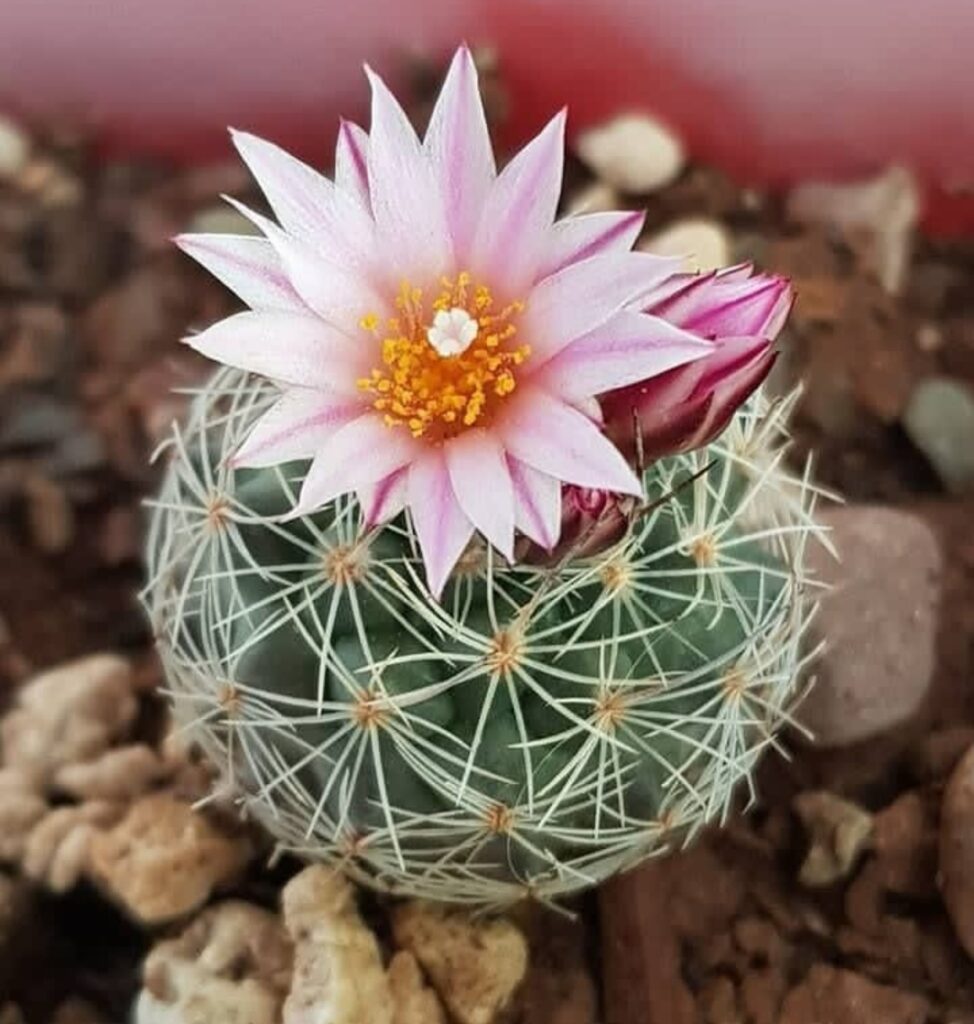
💰 Price Range: $200 – $3,000
This tiny, slow-growing cactus is known for its compact size and unique tubercles. It is native to Mexico and is highly prized by collectors.
Named after its discoverer, Sauer’s Cactus is highly prized by collectors for its compact size and intricate patterns. Cultivated specimens of this rare cactus can fetch significant prices in certain markets, making it a valuable addition to any collection of rare and exotic plants.
Why Is It Expensive?
Due to its extremely slow growth and small population in the wild, this cactus is hard to find. Collectors value well-formed specimens, which take years to develop.
🌵 Care Tip: Thrives in rocky, well-draining soil and requires infrequent watering.
Coryphantha Cactus (Coryphantha spp.)
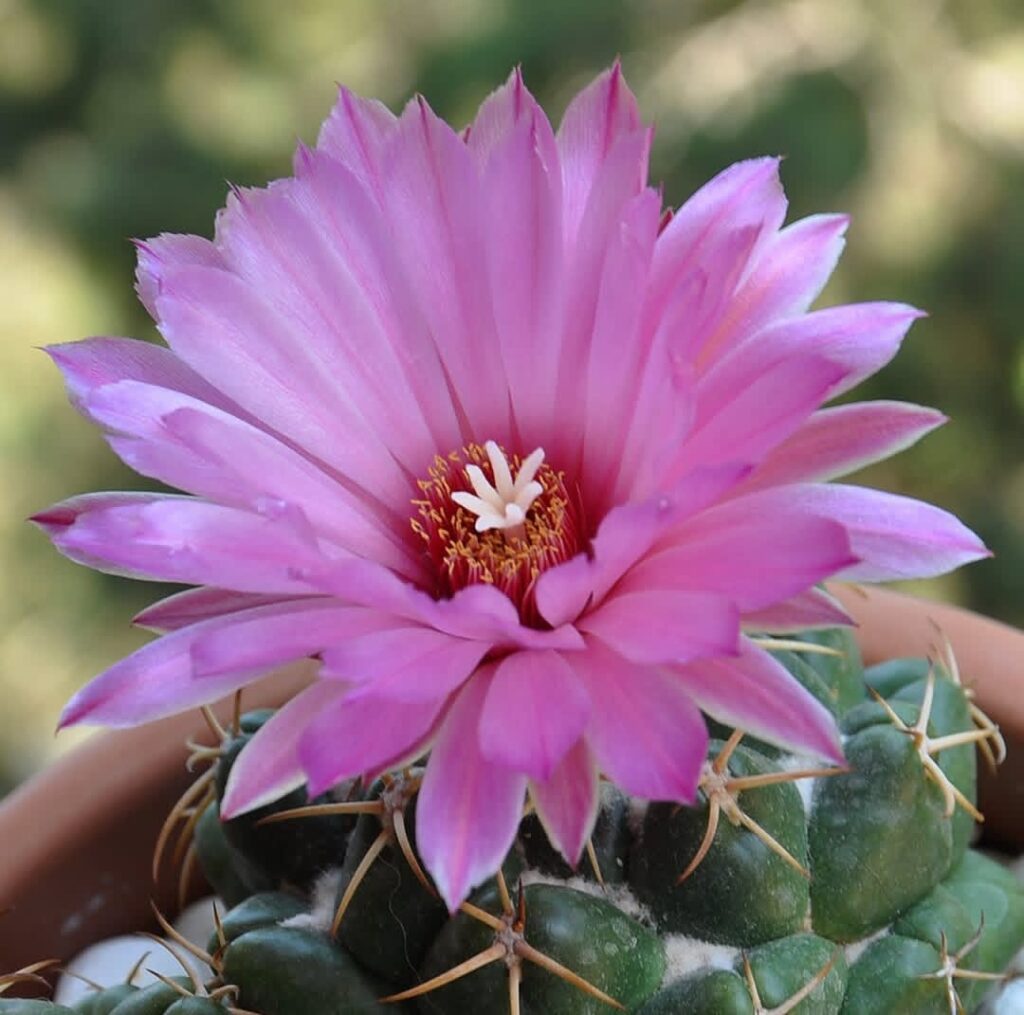
💰 Price Range: $120 – $1,900
The Coryphantha genus includes many small, globular cacti that produce bright yellow or pink flowers.
Known for their small size and intricate flowers, Coryphantha cacti are highly valued by collectors for their ornamental beauty. Certain rare species and cultivars of Coryphantha, such as Coryphantha sulcata and Coryphantha elephantidens, can command premium prices in the collector market due to their rarity and aesthetic appeal.
Why Is It Expensive?
These cacti are difficult to cultivate and have a high demand in the ornamental plant market due to their unique tubercles and floral displays.
🌵 Care Tip: Needs plenty of sunlight and well-draining soil.
Melocactus (Melocactus spp.)
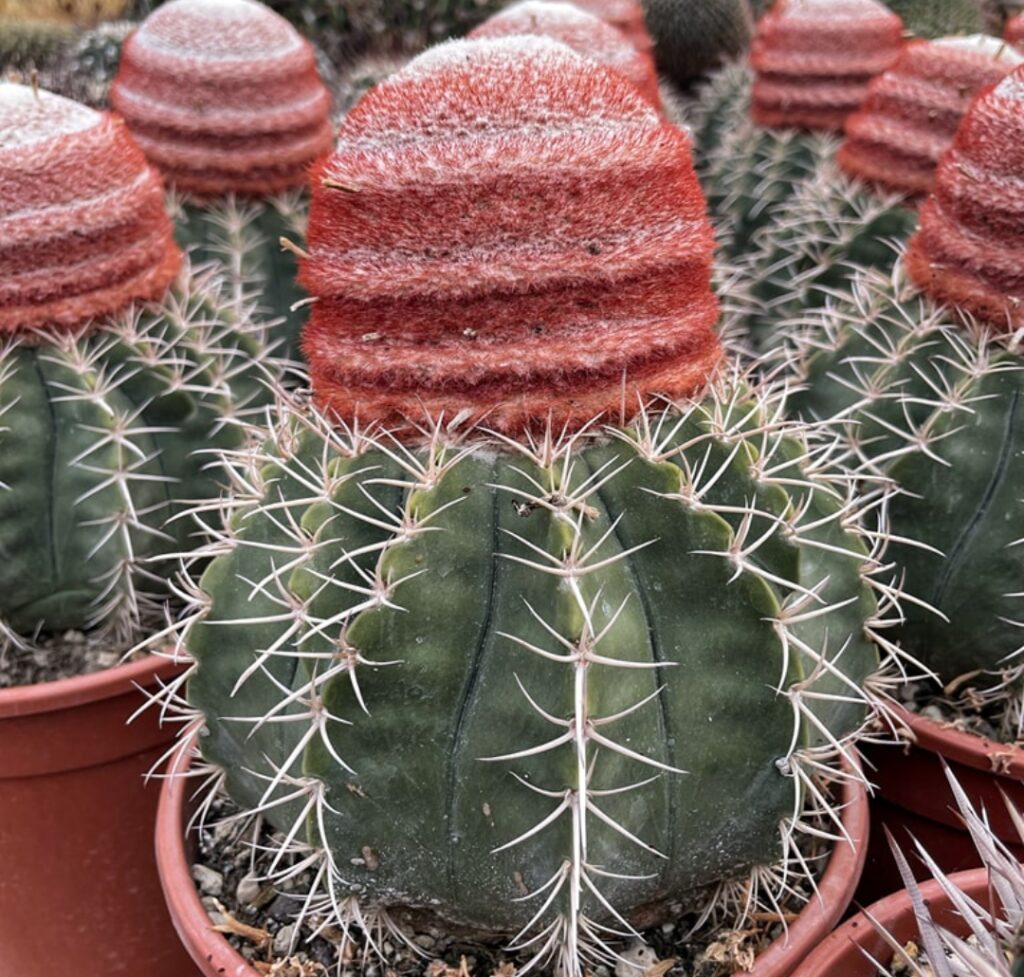
💰 Price Range: $150 – $2,500
Melocactus species are known for their distinctive cephalium, a woolly, red cap-like structure that appears as they mature.
With their distinctive cephaliums and cylindrical bodies, Melocactus cacti are prized by collectors for their unique appearance. Certain rare species and cultivars of Melocactus, such as Melocactus azureus and Melocactus matanzanus, can fetch significant prices in the collector market due to their rarity and ornamental value.
Why Is It Expensive?
The long time required for the cephalium to develop makes mature specimens rare and costly. Their sensitive roots also make them hard to grow outside their native habitat.
🌵 Care Tip: Requires high temperatures, well-draining soil, and minimal watering.
In the world of cacti cultivation and collecting, rarity and exclusivity often dictate value, with certain specimens fetching prices that rival even the most extravagant of commodities. From the golden hues of the Golden Barrel Cactus to the psychedelic allure of the Peyote,
The 21 most expensive cacti in the world represent a diverse array of species and cultivars prized by collectors and enthusiasts alike. Whether for their ornamental value, cultural significance, or sheer rarity, these prickly wonders continue to captivate the imagination and command astonishing fortunes in the world of plant collecting.
FAQS
What makes a cactus expensive?
An expensive cactus is usually rare, slow-growing, and highly sought after by collectors. Factors like unique colors, size, and difficulty in cultivation also increase its price.
Which is the most expensive cactus in the world?
The most expensive cactus is the Peyote (Lophophora williamsii) and the Moon Cactus (Gymnocalycium mihanovichii), with some specimens selling for thousands of dollars.
Why do collectors pay so much for expensive cactus species?
Collectors seek out expensive cactus species due to their rarity, aesthetic appeal, and the challenge of growing them. Some rare cacti even have medicinal or cultural significance.
How can I identify an expensive cactus?
An expensive cactus often has unique features like variegation, unusual shapes, or rare flowering patterns. Some species, like Astrophytum asterias “Super Kabuto,” have intricate markings that increase their value
Are expensive cactus species hard to care for?
Yes, many expensive cactus varieties require specific care, including well-draining soil, precise watering schedules, and controlled lighting to thrive.
Where can I buy an expensive cactus?
You can find expensive cactus species from online specialty nurseries, auctions, and rare plant shops. Some enthusiasts trade them in exclusive cactus collector groups.
What are the risks of buying an expensive cactus?
Some expensive cactus species are illegally harvested from the wild, which harms ecosystems. Always buy from reputable sellers who cultivate them ethically.
Can I grow an expensive cactus from seeds?
Yes, but growing an expensive cactus from seeds takes patience. Some species, like the Ariocarpus fissuratus, take years to develop their signature look.
Do expensive cactus species need special soil?
Most expensive cactus plants thrive in fast-draining soil mixed with sand, pumice, or perlite to prevent root rot
How often should I water an expensive cactus?
Watering frequency depends on the species. Generally, an expensive cactus should be watered sparingly, allowing the soil to dry completely between waterings.
Can I grow an expensive cactus indoors?
Yes, some expensive cactus species, like the Moon Cactus, do well indoors if they receive enough bright, indirect light.
How do I propagate an expensive cactus?
Propagation of an expensive cactus can be done through offsets, grafting, or seeds. Grafting is a common method for rare and slow-growing species.
Do expensive cactus species bloom?
Yes, many expensive cactus varieties produce stunning flowers. Some, like the Queen of the Night (Epiphyllum oxypetalum), only bloom at night.
What is the lifespan of an expensive cactus?
An expensive cactus can live for decades with proper care. Some species, like the Saguaro (Carnegiea gigantea), can survive for over 150 years!
How can I protect my expensive cactus from pests?
To keep your expensive cactus pest-free, inspect it regularly for signs of mealybugs, scale, or spider mites.If necessary, apply neem oil or insecticidal soap.
Can I legally purchase rare cacti?
While many rare cacti can be legally purchased from reputable nurseries and growers, some species are protected due to their endangered status. It’s essential to ensure that any rare cactus you buy has been sourced legally and ethically.
How can I verify the authenticity of a rare cactus?
To ensure you’re purchasing a genuine rare cactus, buy from reputable sellers who can provide documentation or certification of the plant’s origin. Researching the specific characteristics of the species can also help in identification.
Why are some cacti protected by conservation laws?
Certain cacti are protected due to over-collection, habitat loss, and their slow growth rates, which make them vulnerable to extinction. Conservation laws aim to preserve these species in their natural habitats and prevent illegal trade.

